Florida, located in the Southeastern part of America, has a subtropical/tropical climate suitable for a wide range of birds. Finches found in Africa, Eurasia, and the Americas are examples of birds you can see in Florida.
Finches are small passerine birds. These birds are “passerine,” which means their feet are for perching. They have round heads, pointed wings, forked tails, and conical beaks. Here are examples of some finches in Florida:
- House Finch
- Evening Grosbeak
- American Goldfinch
- Pine Siskin
- Indigo Bunting
- Purple Finch
Let’s look at each of the finches in Florida and go over each of their sizes, personality, feeding habits, and more:
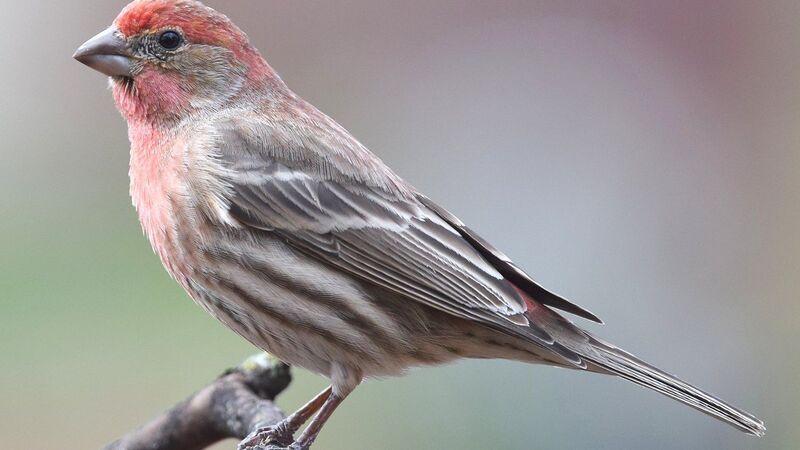
House Finch
- Length – 4.9 – 5.9 in
- Weight – 0.74 oz
- Wingspan – 7.9-9.8 in
You can find House Finches year-round in northwest Florida. You can see them in front and backyards, parks, and in natural habitats and preserves.
The House Finch is a medium-sized finch. Adult males have brown bodies. They also have reddish heads and necks that can change with their diets and by the seasons. Adult females have uppers in grayish brown and streaked undersides. Their wings are short, and their beaks and tails are relatively large.
When they chirp, their sound is fast, upbeat, and varied. Often males and females call to one another during flight with a “cheep” sound.
What do House Finch’s eat? A diet of mainly seeds, they will also eat fruits and flower buds. They love feeders that humans provide, using their perching ability to sit and graze. Therefore, if a person living in northwest Florida wants to attract such a bird, putting a bird feeder out with sunflower seeds may attract one. Nectar feeders can also work. The House Finch is a social bird found in flocks up to approximately 100.
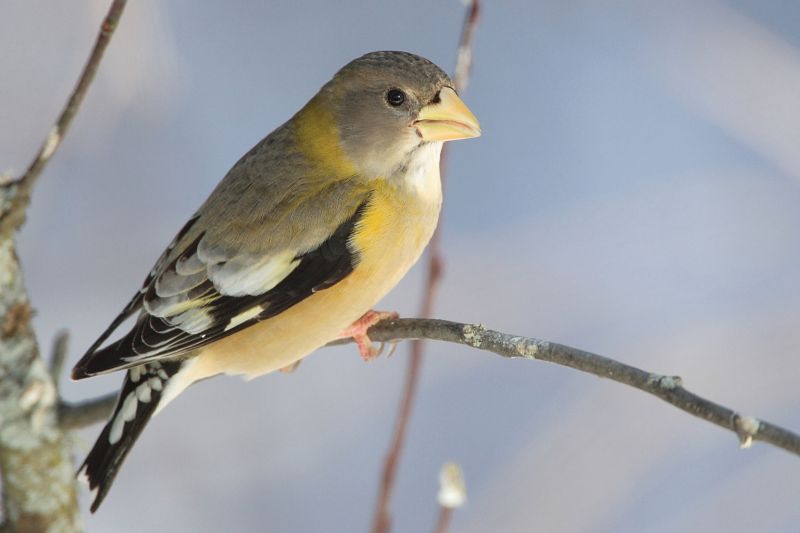
Evening Grosbeak
- Length – 6.3 – 8.7 in
- Weight – 2.1 oz
- Wingspan – 12 – 14 in
Evening Grosbeaks migrate to the northern parts of Florida in the summer. When they migrate, they migrate with hundreds of others.
The adult male Evening Grosbeak has feathers of golden yellow. Its tail, the main portion of its head, and parts of its wings are black. A band of yellow spreads across the forehead. The adult females’ colors are not as bright and prominent as the male’s. Her body is primarily dark grey on her top and light grey on her body. Her tail and wings are black with dots of white. She may have a touch of light yellow on her body, as well. Both birds have prominent light-colored beaks.
The bird is loud with a varied sound. They eat insect larvae, berries, seeds, and fruits. When they’re not in backyards looking for feeders, they like to fly around in the treetops.
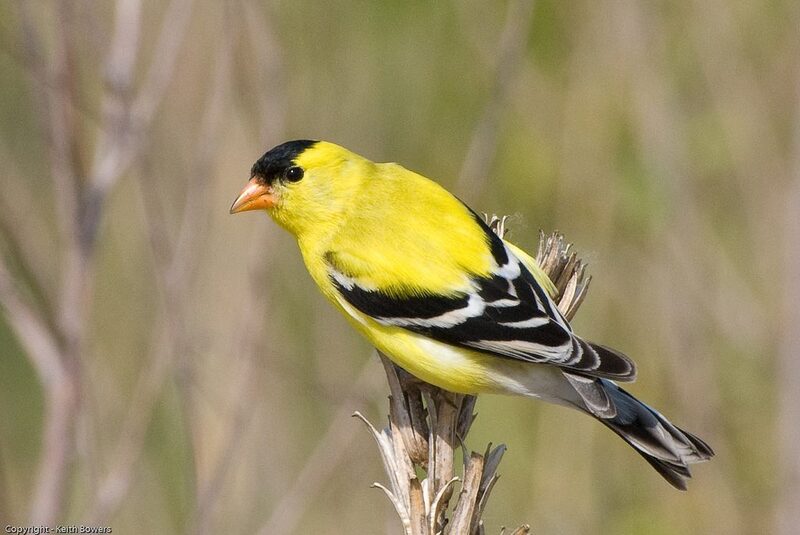
American Goldfinch
- Length – 4.3-5.5 in
- Weight – 0.39 -0.71 oz
- Wingspan – 7.5-8.7 in
The American Goldfinch, which is the most common of North America’s finches from Canada to Mexico, can be found in fields and floodplains across Florida. However, you can also find the bird in places like city parks or your backyard at your feeders. The bird travels in small flocks.
The colors of American Goldfinches vary. Specifically, adult males, during the spring and early summer, have bright yellow feathers with a black forehead, black wings that contain white markings, and patches of white that exist above and below the tail. Adult females are not as bright as males. They have dull yellow feathers underneath and olive feathers above. In the winter, American Goldfinches color becomes rather dull. They are brown with black and white wings. The bird’s beaks are cone-shaped; their heads are small, their wings are short, and their tails are short.
The American Goldfinch prefers to eat small seeds, and they rarely eat anything else. In fact, their beaks are designed for eating small seeds. They are flexible and active, loving to cling to weeds or spend time around backyard feeds. When they fly, they often call out to one another.
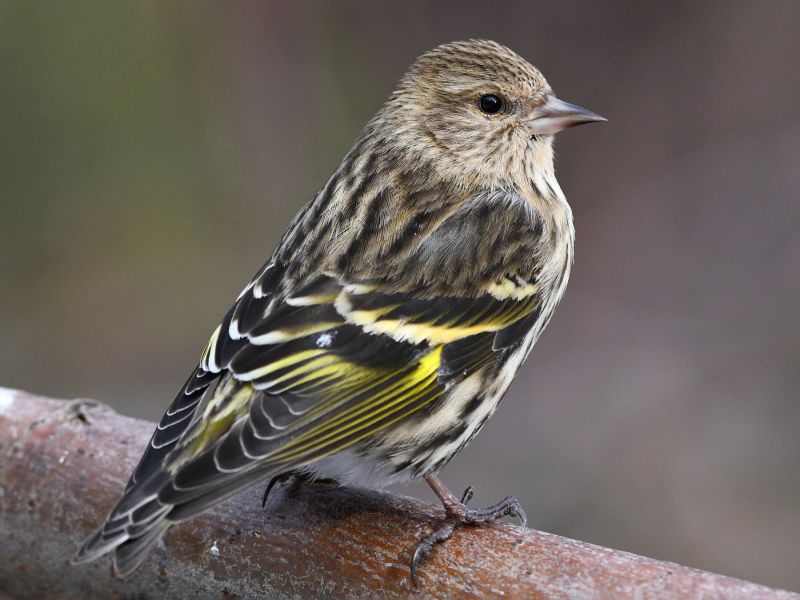
Pine Siskin
- Length – 4.3 – 5.5 in
- Weight – 0.42 – 0.63 oz
- Wingspan – 7.1 – 8.7 in
You can find the Pine Siskin across North America, including Florida. Both male and female Pine Siskin birds are brown on both the uppers and their lower sides with streaks throughout their feathers. They have forked short tails and conical bills that are small and sharp.
You’ll find the Pine Siskin in forests, meadows, grass lawns, backyards, graveyards, and more. It mainly eats seeds from Pine trees. However, they are adaptable to other seeds. They also enjoy small insects.
If you want to attract Pine Siskin’s to your garden, they are more likely to show up if they cannot find food in the wild. Provide feeders in your backyard to attract the birds.
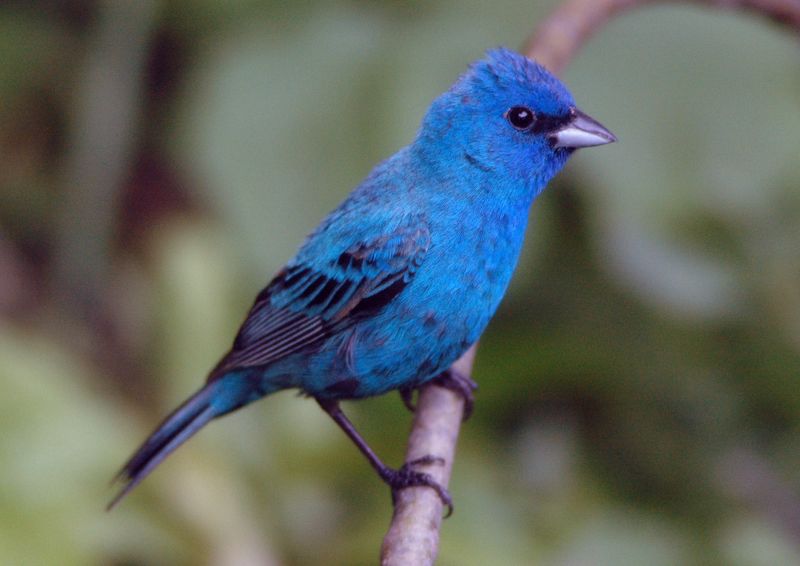
Indigo Bunting
- Length – 4.5-5.1 in
- Weight – 0.51 oz
- Wingspan – 7.1-9.1 in
The Indigo Bunting, a migratory bird found in the cardinal family, is located in the US, including the southern and northern part of Florida. You can find these birds in woodlands, farmlands, etc. You can also find them perched on treetops, telephone lines, shrubs, and more. The birds often migrate by night with the help of the stars.
Adult males are a bright, gorgeous blue with black heads. The tails and wings of the bird are blue and black. In the fall and winter, the bird is brown and black. Adult females are not blue but rather brown on top and lighter brown on their bottoms.
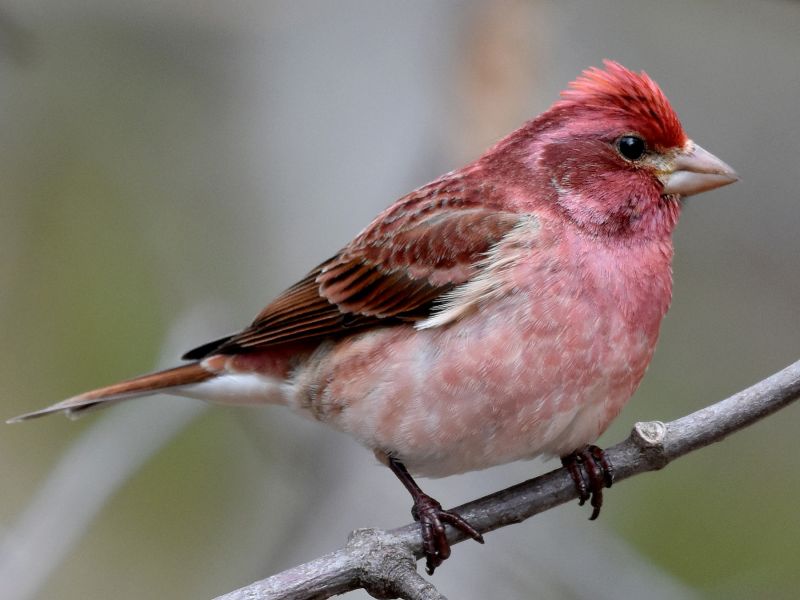
Purple Finch
- Length – 6.0 in
- Weight – 1.2 oz
- Wingspan – 10.0 in
The Purple Finch can be found in North America, including Florida, mainly in northern Florida, but not in the Rocky Mountains region. They are found not only in wild areas but also in backyards.
You will find them feeding on trees and the ground of wooded areas. They like seeds, berries, buds, and insects. They do visit backyard feeders, but not as much as other birds because birds such as House Sparrows have become popular in backyards and may have driven some of the Purple Finches back into the woods.
The bird is called a Purple Finch, but the purple is really more rose in color. The adult males have a rose color found primarily around the bird’s head, back, and breast. The females are not rose at all but have light brown uppers and white undersides. They also have dark brown streaks throughout their bodies and a white line over the eye.
Interesting Facts About Finches
- You may be under the impression that parakeets or parrots are the birds people prefer the most to keep as pets. However, did you know that because finches are tiny, many people prefer to keep them as pets instead of parakeets or parrots?
- In general, a finch prefers the company of another finch. Therefore, if you keep a finch as a pet, it’s usually recommended that you keep two finches living together instead of just one. It is good for the mental and emotional health of the bird.
- Unlike some other birds, a finches voice is relatively tiny. Therefore, their chirping is not loud. This makes the finch an excellent choice for those living in buildings with shared walls, such as apartments or condominiums. Many consider the finches chirp beautiful and soothing.
- The finch is a herbivore. They are plant eaters who love seeds, fruit, and buds.
- The famous naturalist Charles Darwin spent time on the Galapagos Islands examining finches which helped him create his theory of evolution. He noted that 14 species of the Galapagos have ancestors that settled on the islands millions of years ago. One type of finch generated into 14 different kinds of birds seen today.
- If you keep a finch as a pet, you’ll need to understand that finches do not adapt well to being near humans. Therefore, it’s best to avoid touching a finch.
- If you have finches as pets, they should not be kept caged with other types of birds. Keep finches with other finches.
- You can find finches across the globe. However, you won’t find them in Australia.
- In the wild, finches live anywhere from four to seven years. However, as pets, they can live up to 20 years.
Finches In Florida: Summing Up
Finches do well in the subtropical/tropical climate of Florida. The passerine birds vary in color depended on their age, sex, and diets, with males usually being brighter and more vibrant in color than females. Not only can you find the herbivore birds in the wilds of Florida, but if you wish to attract a finch, they are also often drawn to seeds located in your backyard feeder. The finches make for perfect pets, especially for those who live in apartments or condos with shared walls with neighbors. However, due to their nature, you should purchase at least two finches to live together instead of one living alone, and you should avoid physical contact with them. These birds can live long as pets, giving you many years to enjoy them.
Related
- Interested in more Florida birds? How about the Florida Birds Of Prey? 15 different birds highlighted, including pictures!
- Florida happens to be on our list of the best places to live for birders. Check out some of the others in: Best Places To Live For Birders
Leave a Reply